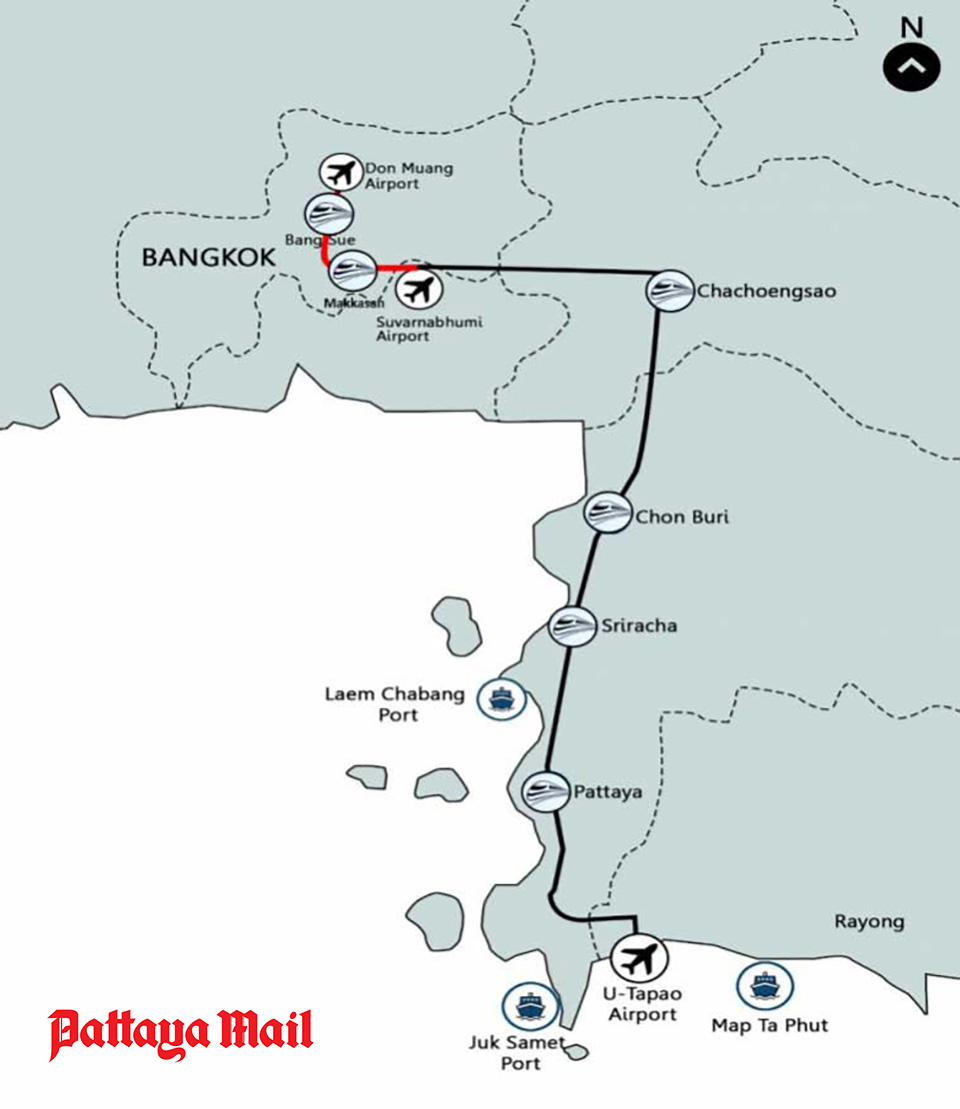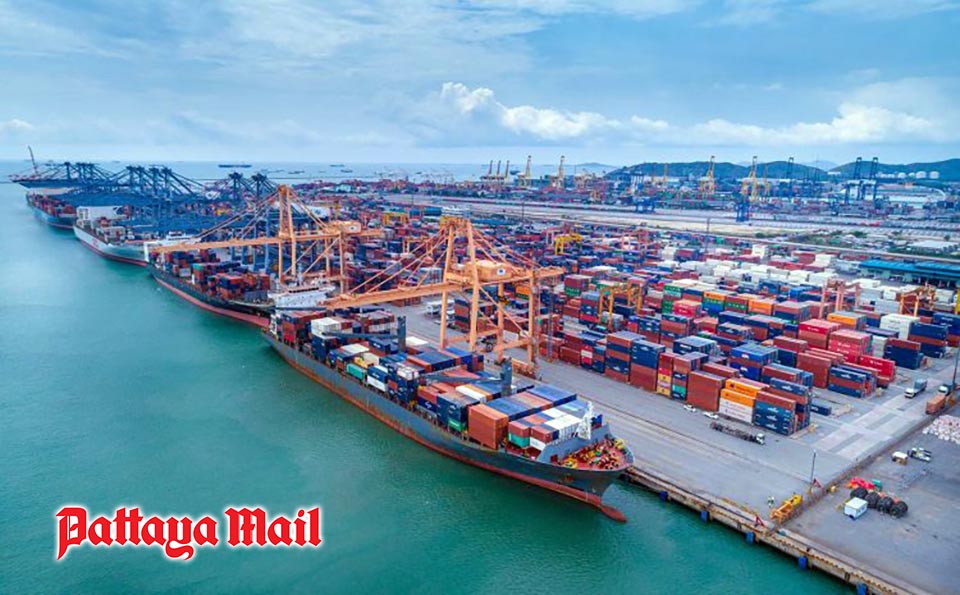
PATTAYA, Thailand – The Eastern Economic Corridor (EEC) High-Speed Railway Project is a key infrastructure initiative poised to revolutionize Thailand’s transportation, trade, and tourism landscape. Designed to connect Bangkok with key areas in the EEC region, this ambitious project aims to enhance regional connectivity, drive economic growth, and transform the Eastern Seaboard into a global hub for industry and travel.
The high-speed rail project is a vital component of Thailand’s EEC development plan. It will link three major airports: Don Mueang International Airport (northern Bangkok), Suvarnabhumi Airport (eastern Bangkok), and U-Tapao Airport (located near Pattaya, in the Eastern Seaboard area).
The rail line, spanning a total of 220 kilometres, is expected to drastically reduce travel times, making it easier for people and goods to move between Bangkok and the EEC’s industrial and tourism zones. The railway is designed to integrate the region’s airports into a single seamless network, creating a high-speed travel corridor that promotes regional trade and tourism. This is expected to attract foreign investment, reduce logistical bottlenecks, foster the growth of the industrial sector, and enhance Thailand’s position as a transportation hub in Southeast Asia.
In October 2019, the Thai government signed a public-private partnership agreement with a consortium led by Charoen Pokphand Group and China Railway Construction Corporation. Construction was initially scheduled to begin in 2023, but delays arose due to challenges in land acquisition, environmental clearances, and funding issues. The original target for project completion was set for 2029, although this timeline remains uncertain due to ongoing setbacks.
In June 2024, then Prime Minister Srettha Thavisin reaffirmed the government’s commitment to the project, highlighting its critical role in boosting regional economic growth. The government has prioritized resolving issues delaying the project, including expediting land acquisition and securing additional funding. Despite its potential, the EEC Rail Project has faced several hurdles. Land acquisition has been a time-consuming process, with negotiations required to secure the necessary space. Environmental concerns have caused further delays, with approvals for environmental impact assessments taking longer than anticipated. Funding uncertainty remains another obstacle, as balancing public and private investment has proven challenging.

While these delays have slowed progress, the Eastern Economic Corridor Rail Project remains a cornerstone of Thailand’s infrastructure development strategy. It represents a bold step forward in creating a more connected and competitive Thailand. With continued focus from the government and private stakeholders, the project holds promise to reshape Thailand’s transportation landscape, enhance economic opportunities, and establish the Eastern Seaboard as a global hub for trade, industry, and tourism.
The Eastern Economic Corridor High-Speed Railway Project is a transformative initiative with far-reaching implications for Thailand’s future. Despite the delays, the government’s unwavering commitment to the project suggests a bright future for this ambitious infrastructure endeavour.










